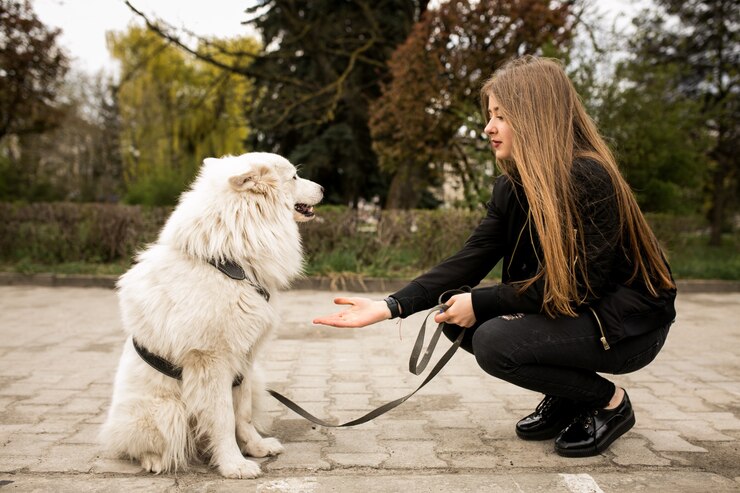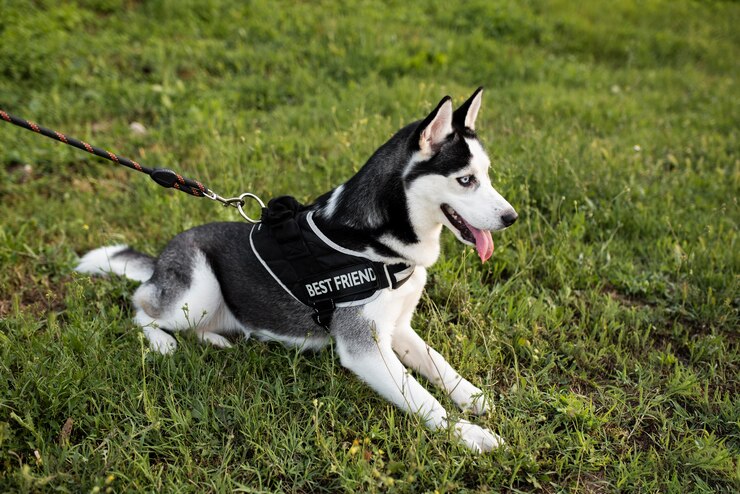PETS
The Role of Relief Vets in Managing Clinic Workloads

In the dynamic world of veterinary medicine, managing clinic workloads efficiently is crucial for maintaining high standards of care while also ensuring the well-being of both patients and staff.
Relief veterinarians, often provided through veterinary relief services, play a pivotal role in this delicate balance. These skilled professionals step in during times of need, offering temporary support and expertise to veterinary practices of all sizes.
In this article, we delve into the significance of relief veterinarians and how they contribute to managing clinic workloads effectively.
Understanding Relief Veterinarians and Veterinary Relief Services
Relief veterinarians are licensed professionals who provide temporary veterinary services at clinics, hospitals, or other animal care facilities.
They offer their expertise on a short-term basis, filling in for regular staff members who may be on leave, attending conferences, or dealing with unexpected emergencies.
Veterinary relief services act as intermediaries between clinics in need of temporary staff and veterinarians seeking flexible work opportunities. These services streamline the process of finding qualified relief vets, ensuring that clinics can quickly access the support they require.
Flexibility in Staffing
One of the primary advantages of relief veterinarians is their ability to provide flexibility in staffing.
Veterinary clinics often face fluctuations in workload due to seasonal variations, staff vacations, or unexpected spikes in patient numbers.
By utilizing relief vets, clinics can adjust their staffing levels according to demand without compromising the quality of care provided. This flexibility allows clinics to maintain optimal levels of service while efficiently managing their resources.
Expertise Across Specializations
Relief veterinarians bring a diverse range of skills and experiences to the table. Many have worked in various clinical settings and possess expertise across different specializations within veterinary medicine.
This broad knowledge base enables relief vets to adapt quickly to different practice environments and handle a wide array of cases effectively.
Whether it’s routine wellness exams, surgical procedures, or emergency care, relief veterinarians are equipped to handle the challenges they encounter during their temporary assignments.
Minimizing Burnout and Stress
The demanding nature of veterinary medicine can take its toll on practitioners, leading to burnout and stress.
Long hours, emotionally challenging cases, and the pressure to provide excellent care can contribute to fatigue among veterinary professionals. Relief veterinarians offer much-needed respite by stepping in to provide temporary relief for overworked staff.
Their presence allows regular veterinarians and support staff to take breaks, recharge, and return to their duties with renewed energy and focus. By minimizing burnout and stress, relief vets help create a healthier and more sustainable work environment within veterinary clinics.
Continuity of Care
Maintaining continuity of care is essential for building trust and rapport with clients and their pets. When regular veterinarians are unavailable, continuity can be disrupted, potentially affecting the quality of service provided.
Relief veterinarians strive to uphold continuity by familiarizing themselves with clinic protocols, patient histories, and client preferences. They work closely with existing staff to ensure a seamless transition, providing consistent care that aligns with the clinic’s standards.
This commitment to continuity helps instill confidence in clients, who can trust that their pets will receive the same level of care regardless of staffing changes.
Professional Development Opportunities
For relief veterinarians, working in various clinic settings offers valuable professional development opportunities. Each assignment exposes them to new challenges, technologies, and best practices within the field of veterinary medicine.
They have the chance to collaborate with different teams, learn from experienced colleagues, and expand their skill sets.
This continuous learning process enhances their versatility and adaptability, making them even more effective in their roles as relief providers.
Additionally, exposure to different practice environments can help relief vets identify areas for personal growth and specialization within the veterinary profession.
Addressing Staff Shortages
Staff shortages can pose significant challenges for veterinary clinics, especially in rural or underserved areas where recruiting permanent staff may be difficult. Relief veterinarians offer a solution to these staffing challenges by providing temporary assistance when needed.
Veterinary relief services maintain a network of qualified professionals who are willing to travel to areas experiencing staff shortages, ensuring that clinics can continue to operate smoothly despite staffing constraints.
By addressing staff shortages, relief vets contribute to the overall sustainability of veterinary practices and help ensure that essential services remain accessible to pet owners in all communities.
Conclusion
Relief veterinarians and veterinary relief services play an indispensable role in managing clinic workloads effectively. Their flexibility, expertise, and commitment to continuity of care make them valuable assets to veterinary practices of all sizes.
By providing temporary support, minimizing burnout, and addressing staff shortages, relief vets help maintain high standards of care while promoting the well-being of both patients and veterinary professionals.
As the demand for veterinary services continues to grow, the importance of relief veterinarians in managing clinic workloads is only expected to increase, ensuring that pets receive the care they need when they need it, regardless of staffing challenges.
PETS
Know How To Prevent Escapes: Choosing A Pitbull Harness With Maximum Security

Do you have a Pitbull in your house? If yes, you would have often observed several traits of this breed in the day-to-day that go way back to their violent past. Though the current breed of Pitbulls is nothing like their ancestors, many people still unfortunately misunderstand this dog breed, which is why they are not very common in households. Pitbulls, however muscular and energetic they may be, even scary to some, are smart, gentle, and loving. All they want from their owners is to use their high levels of energy during playtime. With that said, it is essential for pet parents to use the right tools and equipment for their Pitbulls in order to ensure adequate control over the dog. Of course, you will need to train your dog for different commands and take them out for walks and other outdoor adventures, but that has to happen while not scaring your neighbourhood. For these reasons, finding the right pitbull harness is crucial – one that matches their strength, keeps them tightly secured but comfortable and does not restrict their movements.
If you have been struggling with finding the right pitbull harness for your dog, then this guide is for you. Read on to gain more insights.
Choosing a Pitbull Harness With Maximum Security: Factors to Consider
There are some rules to sizing, durability, safety, and comfort of your Pitbull when buying a harness for them. It is essential to choose a harness that is robust enough to keep your dog’s strength and energy under control while still being fastened in a way that they are comfortable during walks or adventures.
1. Strength
Pitbulls, in their compact frames, pack a lot of energy and muscles, making factors such as strength crucial when picking out a harness for them. Look for a sturdy harness that can withstand huge amounts of power without tearing or breaking easily. A heavy-duty Pitbull harness can evenly distribute the pressure across the dog’s chest and back, helping you manage the pulling behaviour better and offering you good control.
2. Size
Size is another crucial factor to consider when you buy a Pitbull harness. A good fit harness must be snug enough so your dog does not escape easily but not too tight as it may cause chafing or restrict their movement. Harnesses that come with reinforced stitching provide more durability against the high level of force created by an excited Pitbull during walks. Some harnesses even have sturdy handles that allow extra control in busy places or environments where you need to keep your dog close. Ensure that the harness buckles are well-secured and made from metals rather than plastic which may not hold up well under strain.
3. Comfort
A good harness for your Pitbull should feel like a warm hug, not a tight uncomfortable squeeze. Your pet’s comfort is paramount to them enjoying their lives while being safe from unexpected injuries or health issues. Look for a Pitbull harness made of breathable fabrics and padded straps to provide cushioning to the dog’s shoulders. See if the harness has adjustable straps to achieve a custom fit as per your Pitbull’s size and frame. A comfortable harness encourages good dog behavior as dogs will likely resist something that causes them to chafe and restricts their movements.
4. Durability
A Pitbull is quite strong and powerful, requiring a robust harness that does not wear and tear easily. A Pitbull harness made of heavy-duty materials such as strong polyester or reinforced nylon can withstand intense pulling force and rough play.
5. Safety
Safety is a very crucial factor when you buy Pitbull harness, especially if you have a crowded neighbourhood or you like to take them for outdoor adventures often. Certain harnesses are made of reflective strips that allow you to have visibility of your pet even in low-light conditions, providing an added level of security. Some harnesses for Pitbulls are made with padded chests, which are comfortable and also protect your pet if they lunge suddenly, minimizing the strain on their back and neck.
Conclusion
It is critical to do thorough research to find the right harness for your Pitbull. The best type of Pitbull harness is one that is sturdy and heavy-duty to allow better control over this strong and active breed. A well-designed dog harness allows the owners and trainers better control over this powerful breed. This ensures both you and your dog are safe, especially outdoors, where there could be unexpected things happening all around that may startle your pet. Pitbull harnesses can evenly distribute the pressure across your dog’s chest and shoulders. This can prevent injuries, discomfort, and long-term health issues that mostly arise due to collar leashes. Harnesses designed for Pitbulls discourage pulling behaviour, making them one of the most effective tools for training this breed.
PETS
What Are Some Recommended Pet Strollers for Small Cats?

If you’re a cat owner looking to make traveling with your furry friend easier, a cat stroller is a fantastic solution. Whether for walks, vet visits, or outdoor adventures, the right pet stroller for cats ensures comfort and safety for both you and your feline companion. Here are some recommended options for small cats, highlighting the best picks from MewCats.
Features to Look For in a Pet Stroller for Cats
Compact and Lightweight: Small cats don’t need large, bulky strollers. Look for a compact design that’s easy to maneuver and store.
Comfortable Interior: Soft padding and breathable mesh are essential for your cat’s comfort.
Versatile Design: A cat stroller with detachable carrier adds convenience, letting you use it as both a stroller and a carrier.
Durability: Choose sturdy materials to ensure long-term use.

Top Picks for Small Cats at MewCats
Stylish Detachable Cat Stroller
This sleek and versatile option is perfect for small cats. It features a detachable carrier, breathable mesh panels, and smooth-rolling wheels for effortless mobility.
Retractable Cat Carrier Backpack with Wheels
Combining a backpack and stroller, this is an excellent choice for travel. The retractable design ensures compact storage while offering maximum functionality.
Cat Carrier Bag Tent
Lightweight and foldable, this option is ideal for short outings or casual trips. Its modern design keeps your cat cozy and secure.

Why Choose MewCats?
At MewCats, we specialize in premium pet strollers and carriers. Whether you’re looking for the best cat stroller, a cat pram, or a cat stroller for 2 cats, our collection is designed to meet your needs.
The Benefits of Using a Cat Stroller
Safety: Keep your cat secure during outdoor adventures.
Convenience: Easily transport your pet to the vet, park, or on trips.
Comfort: Designed for cozy and stress-free travel.
Final Thoughts
A high-quality pet stroller can transform the way you and your small cat experience the world together. Whether you need a two-cat stroller or a versatile cat carrier and stroller, MewCats has the perfect options for you.
Browse our collection today to find the best fit for your feline friend!
PETS
Top 5 XL Dog Harness Features for Strength, Comfort, and Durability

Extra-large dogs require a lot of equipment due to their size, strength, and the energy level that comes with the extra-large breed. Selecting the correct harness for your large and oversized dog can enhance your strolling adventure and protect your pet. An XL dog harness is not just a means of correcting your pet’s behaviour; it is your reliable companion on walks. Now let us look at the fundamental attributes of an XL dog harness that set it apart from the rest and why it matters to you and your dog.
The Need for a Specialized XL Dog Harness
Large breeds have their own problems that are associated with their size. Their muscular structure and high activity levels indicate that conventional harnesses are insufficient for them. This is why it is important to make the right choice and to purchase a specially designed XL dog harness.
1. Convenience Meets Ease: The 3-Buckle System
Among the major benefits of a good XL dog harness is the 3-buckle system, which is very comfortable to use. The traditional harnesses may prove cumbersome when placed over a dog’s neck, especially when the dog is large and might even pull off the harness. The 3-buckle system helps to overcome this problem since you are able to buckle the harness around the body of your dog easily.
This system is especially useful for those dogs that get nervous or those who do not like when harness slides over their heads. The 3-buckle system provides maximum hold due to the straps and buckles’ placement but stays comfortable throughout the performance.
2. Safety First: Reflective Features for Low-Light Walks and Padded Handles
Large and extra-large dogs may need to be guided more often, particularly in a crowded place or when an unpredictable event occurs. The padded handle built into the XL dog harness means that you have something comfortable and secure to hold on to when dealing with your dog.
When it comes to large breeds, visibility is of crucial significance since such dogs are more challenging to manage during times of incidents. Whether you are walking at night or in the morning, a reflective harness gives both you and your dog confidence during the walk.
The use of reflective materials in an XL dog harness is very important when it comes to ensuring that your dog is visible. These elements reflect light from vehicles, streetlights, flashlights, and other sources, keeping your dog visible to other people even during the night.
3. Versatile Control: Front and Back Leash Hooks
It is important to control big dogs, and a harness with both front and back leash attachment points provides the best option. Every attachment point has its function.
The front leash hook is one of the best training aids, particularly for dogs that love to tug on the leash. Using the leash attached to the front helps to prevent pulling by simply reminding the dog that you are still there.
The back leash hook, on the other hand, is ideal for regular walking and for dogs that are already obedient. It offers comfort in a position while still being able to have control at the same time.
4. Built to Last: Durable Materials
There is nothing more important than the durability of the harness for an extra-large dog. These are strong animals, and they put a lot of force, and a poor harness just will not stand up to it. High-quality XL harnesses are made from durable and strong metal buckles.
Nylon webbing makes the harness very strong and resistant to daily use, while reinforced stitching makes it even stronger. A strong metal buckle and leash ring are used in the construction of this harness to guarantee that it does not break under pressure.
5. Comfort Redefined: Padded Construction and Breathable Mesh
Fitting is a very important aspect when it comes to the dog harness, but it is even more important when it comes to extra-large breeds of dogs. These dogs rely on their XL dog harnesses for most of their walking, hiking, or training, and thus the harnesses are worn for a long time. A padded harness is equipped with a cushion that reduces rubbing and ensures that pressure is evenly spread all over your dog’s body.
Additional mesh panels make this item comfortable to wear due to the possibility of breathing through the fabric. This is helpful to avoid the situation whereby the chest becomes too hot during hot weather or while engaging in any activities that call for high heat.
Conclusion
An extra-large dog harness is not just an accessory; it is a companion that helps to achieve safe and fun walks. Features such as the 3-buckle system, reflexive trimming, dual leash connection points, robust material building, padded structure, breathable mesh, and a padded handle are all factors that help you to identify an XL dog harness that is as reliable as it is comfortable.
These features are not only going to provide the necessary durability and safety for your pet but also contribute to the formation of a close-knit relationship with your beloved pet.
-

 GENERAL1 year ago
GENERAL1 year agoDiscovering the Artistic Brilliance of Derpixon: A Deep Dive into their Animation and Illustration
-

 Posts1 year ago
Posts1 year agoSiegel, Cooper & Co.
-

 Lifestyle1 year ago
Lifestyle1 year agoPurenudism.com: Unveiling the Beauty of Naturist Lifestyle
-

 Lifestyle1 year ago
Lifestyle1 year agoBaddieHub: Unleashing Confidence and Style in the Ultimate Gathering Spot for the Baddie Lifestyle
-

 HEALTH1 year ago
HEALTH1 year agoTransformative Health Solutions: Unveiling the Breakthroughs of 10x Health
-

 Entertainment1 year ago
Entertainment1 year agoGeekzilla Podcast: Navigating the World of Pop Culture, Gaming, and Tech
-

 Entertainment1 year ago
Entertainment1 year agoKhatrimaza Unveiled: Exploring Cinematic Marvels and Entertainment Extravaganza
-

 BUSINESS1 year ago
BUSINESS1 year agoUnlocking the Secrets to Jacqueline Tortorice Remarkable Career and Accomplishments
